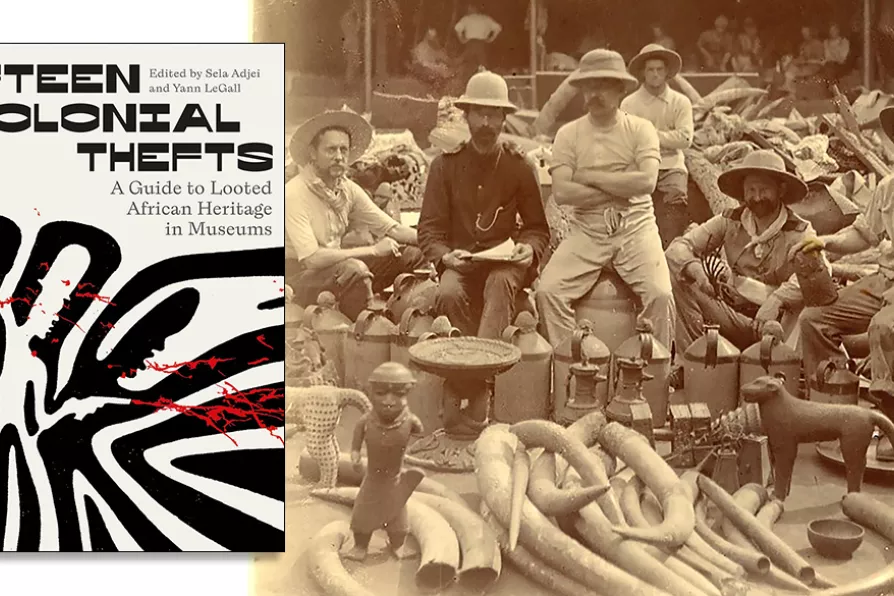SIMON DUFF recommends a recording of Arvo Part that takes the listener on a pilgrimage through seemingly distant times and events of the Bible
The looting of African heritage
FRANCOISE VERGES introduces a powerful new book that explores the damage done by colonial theft

 ARROGANCE AND IGNORANCE: Group of six European men sitting, surrounded by Looted objects from the Benin Punative Raid, 18 February 1897
[British Museum/Public Domain]
ARROGANCE AND IGNORANCE: Group of six European men sitting, surrounded by Looted objects from the Benin Punative Raid, 18 February 1897
[British Museum/Public Domain]
Fifteen Colonial Thefts: A Guide to Looted African Heritage in Museums
Edited by Sela Adjei and Yann LeGall, Pluto, £25
EUROPEAN colonisation of Africa was not only about armed conquest, massacres and the exploitation of resources. It was also about the appropriation of spiritual and political symbols. It led to the erasure of a social, cultural, and symbolic world.
The book, Fifteen Colonial Thefts: A Guide to Looted African Heritage in Museums, adds to the growing literature on the history of the colonial looting of African art and heritage and the issue of restitution, reappropriation and return. Published by Pluto, the book is edited by Ghanaian-born multidisciplinary artist Sela K Adjei and Berlin-based postdoctoral researcher Yann Le Gall.
Similar stories

Ben Cowles speaks with IAN ‘TREE’ ROBINSON and ANDY DAVIES, two of the string pullers behind the Manchester Punk Festival, ahead of its 10th year show later this month

JAN WOOLF wallows in the historical mulch of post WW2 West Germany, and the resistant, challenging sense made of it by Anselm Kiefer

CAROLINE FOWLER explains how the slave trade helped establish the ‘golden age’ of Dutch painting and where to find its hidden traces

The Morning Star sorts the good eggs from the rotten scoundrels of the year










